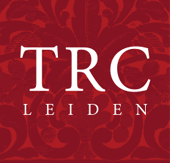The Copts are members of the Coptic Orthodox Church in Egypt, which developed as a separate Church in the sixth century AD, in the wake of the Council of Chalcedon in 451 AD. They are the largest denomination of Christians in Egypt and the largest Christian minority in the Middle East.
The Copts are very proud of their orthodox tradition, which they feel is very close to the original Church. Martyrs play an important role in the Copts’ history and sense of identity. Their calendar even starts with the Anno Martyrum ('In the year of the martyrs'; 284 AD), to commemorate the persecution of Christians under the Roman Emperor Diocletian. They also have their own language and alphabet, Coptic, which is related to both ancient Egyptian and Greek, although it is now only used during the liturgy.

Coptic secular dress
In general, ordinary Coptic men do not dress in a distinctive way, but Coptic women stand out in Egypt because they do not wear a headscarf, commonly worn by Muslim women. In the past both Muslim and Christian women used to wear some type of headscarf, like the colourful sharb or the elegant, sheer black tarkha. From the 1960s these traditional head covers were increasingly thought backward and were abandoned by many women, both Coptic and Muslim. However, from the 1980s the Islamic headscarf started to rise in popularity. Today, most Muslim women outside of Cairo wear some type of headscarf, while Coptic women do not – although some women still wear the traditional scarves. They only cover their heads while praying and in church, often with special prayer scarves that look very different from the Islamic hijab.
In contrast to women, Coptic men are difficult to recognize as they do not dress differently from their Muslim neighbours. There is, however, one thing that distinguishes Coptic men and women alike: the cross tattoo. Most Copts have a small cross tattooed on the inside of their right wrist. These tattoos are often set at a very young age. In the past this was done at home or by local tattooists, using a needle and a paste of crushed green leaves. Today tattoo artists set up small booths in the monasteries during festivals. The tattoos function as an indelible marker of their Christian identity.
 Liturgical dress of a Coptic bishop, worn at Christmas and Easter. TRC 2012.0143 (cope) and TRC 2012.0136 (bishop's headwear). Click the illustration for the TRC catalogue entry for the cope.Coptic religious dress
Liturgical dress of a Coptic bishop, worn at Christmas and Easter. TRC 2012.0143 (cope) and TRC 2012.0136 (bishop's headwear). Click the illustration for the TRC catalogue entry for the cope.Coptic religious dress
Priests are important figures within the Coptic community, not only as prelates, but also as representatives. They are recognizable by their distinct outfit, consisting of a black gown, similar to the local gallabiya, a black felt cap (amma), cross necklace and their beard. They wear a more ornate outfit to celebrate the liturgy, including a white overgarment (tonya), special oversocks (talliq), a stole (sadra), a mitre (taylasan) and a special mantle (bornos) for Christmas and Easter. Bishops are recognizable by their more elaborate cap and their staff. Ordinary
Coptic men also participate in the celebration of the liturgy as deacons, for which they put on the white overgarment (tonya), the same as the priest, and a stole (badrushil) wrapped in a manner that indicates their rank.

Both nuns and monks wear a qalansuwa, a hood embroidered with thirteen crosses that represent the apostles and Christ – although nuns wear it underneath their veil. They are also girded with a leather belt underneath their gown to remind them of their vows. The qalansuwa and the rest of their outfit are said to protect the nuns and monks from attacks by devils.


